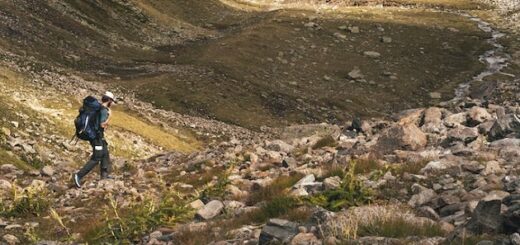How to Pack for a Week Long Backpacking Trip
by Martha S ·
This page may contain affiliate links. For more information, see our "About Us" page.
Planning and Preparation are Crucial Assets When Embarking on an Exhilarating Week-Long Backpacking Adventure
Backpacking is undoubtedly one of the most thrilling ways to explore nature, immerse in serene landscapes, experience solitude, and create unforgettable memories. However, as exhilarating as it may sound, a successful backpacking trip requires thorough planning, especially when you are preparing for an extended week-long excursion into the wilderness. Packing correctly can make or break your adventure; hence this comprehensive guide will assist you in mastering how to pack efficiently and effectively for a week long backpacking expedition.
1. Understanding Your Destination & Environment
Before diving deep into packing, it’s essential firstly to understand your destination thoroughly. Research its weather patterns, terrain types, potential hazards (e.g., wildlife encounters), and necessary permits you may need for accessing certain areas. This information will help shape your packing decisions and ensure that your gear list aligns with the specific conditions of your chosen location.
2. Creating a Detailed Packing List
A detailed backpacking trip checklist is indispensable when preparing to embark on such an adventure. Start by creating categories for various types of items you will need, including clothing & footwear; shelter & sleep systems; food and water supplies; safety gear; first aid essentials; navigation tools; electronics (if any); personal hygiene products; miscellaneous accessories like repair kits or extra batteries.
3. Clothing & Footwear: Layering is Key!
When it comes to clothing, layering is your best friend in unpredictable outdoor conditions. Pack versatile garments that can be mixed and matched according to the temperature fluctuations during daytime hours as well as nighttime chills. Essential items include quick-drying synthetic t-shirts or long sleeved shirts; moisture wicking undergarments; lightweight hiking pants/shorts; insulating layers such as fleece jackets, down vests, and warm socks; waterproof shell jacket & pants for rain protection; gloves, hat or beanie (depending on season). Don’t forget comfortable yet sturdy footwear like hiking boots with good ankle support coupled with lightweight trail running shoes/sandals as backup options.
4. Shelter & Sleep Systems: Comfort and Protection Matter Most
Choose a reliable tent suited for your group size, considering factors such as weight, ease of setup, ventilation capabilities in warm weather conditions, resistance to harsh elements like strong winds or heavy rainfalls. Invest in an inflatable sleeping pad providing adequate insulation from the cold ground while ensuring comfort during sleep time; also consider adding a lightweight sleeping bag customized for anticipated temperature ranges on your trip.
5. Food & Water Supplies: Plan Nutritious Meals and Hydration Strategies
Prepare nutrient-dense meals consisting of nonperishable items like freeze dried foods, trail mixes, granola bars along with fresh fruits or vegetables (if possible), protein sources such as jerky or tuna packets. Calculate your daily water requirements based on factors including body weight, activity levels, temperature variations throughout the day – aim for carrying enough purification methods too (water filters/purification tablets).
6. Safety Gear & First Aid Essentials: Always Be Prepared!
Always pack a comprehensive first aid kit stocked with essential items like bandages, gauze pads, adhesive tape, antiseptic wipes or creams, pain relievers/anti-inflammatory drugs like ibuprofen; emergency blanket(s) for insulation during cold spells; whistle to signal distress if necessary. Additionally, include navigation tools such as compasses and topographic maps (or GPS devices), headlamps with extra batteries plus any personal safety gear you deem essential depending on your specific trip requirements.
7. Electronics & Communication Devices: Strike a Balance Between Technology And Nature Immersion
If opting to carry electronic gadgets like smartphones or cameras, make sure they are fully charged prior to departure and pack additional power banks for extended usage periods away from charging outlets. Ensure your devices have necessary accessories such as protective cases/covers along with waterproof bags if needed for protection against moisture damage during inclement weather conditions.
8. Personal Hygiene Products & Miscellaneous Accessories: Keep Yourself Clean and Prepared
Pack lightweight personal hygiene items including biodegradable soap bars, toothbrush/toothpaste combo packs; wet wipes or sanitizing hand gels for quick cleanups on-the-go. Don’t forget essential miscellaneous accessories like repair kits (for tent poles & clothing), sunscreen lotion with SPF 30+, insect repellent sprays/wristbands to ward off pesky mosquitoes and bugs during evening hours or overnight stays in wilderness campsites.
9. Packing Your Backpack Efficiently: Distribution of Weight Matters!
Once you’ve assembled all the necessary items on your checklist, it is time for packing them efficiently into your backpack while ensuring proper weight distribution across different parts of the bag to prevent strain injuries during long hikes or steep ascents/descents along trails. Start by placing heaviest objects closest to your back (around waist area) followed by medium-weight items towards top-middle region near shoulders; finally, store lighter accessories at outer pockets for easy access throughout the journey.
10. Final Checks & Adjustments: Ensure Nothing Is Missing!
Before leaving home base, conduct a thorough final inspection of your packed backpack to ensure you haven’t forgotten any crucial items from your checklist or overlooked essential preparations such as double-checking permits and necessary reservations if applicable at campsites along the route. It is always better safe than sorry when venturing into unknown terrains on lengthy adventures like these!
Conclusion:
In conclusion, meticulous planning coupled with an organized approach towards packing can greatly enhance your week long backpacking experience by minimizing potential risks associated with insufficient or ill-suited gear selections while optimally satisfying comfort levels required for sustained enjoyment amidst breathtaking wilderness landscapes. By implementing the above guidelines diligently, you are bound to create cherished memories that will last a lifetime!



